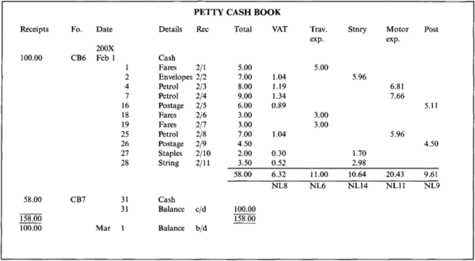discounted payback period definition: Discounted payback method definition, explanation, example, advantages, disadvantages
Contents:

Let’s use the first example, but expand it by including the fact that the organisation has a cost of capital of 10%. Two other advantages are that payback is easy to calculate and to understand. Discounted Payback Periodis the duration that an investment requires to recover its cost taking into consideration the time value of money.

Imperial Mining Receives Positive Results for the Preliminary … – GlobeNewswire
Imperial Mining Receives Positive Results for the Preliminary ….
Posted: Mon, 13 Jun 2022 07:00:00 GMT [source]
The shorter the discounted payback period, the quicker the project generates cash inflows and breaks even. While comparing two mutually exclusive projects, the one with the shorter discounted payback period should be accepted. The payback period is the amount of time for a project to break even in cash collections using nominal dollars. The basic method of the discounted payback period is taking the future estimated cash flows of a project and discounting them to the present value. This is compared to the initial outlay of capital for the investment. While both these techniques are useful in evaluating projects, the discounted method is preferred due to its higher accuracy.
Conclusion – simple vs discounted payback period method:
Since the machine will last three years, in this case the payback period is less than the life of the project. What you don’t know is how much of a total return it will give you over those three years. However, 70% of the recovery of investment A occurs in 3rd and 4th years whereas 70% of the amount in investment B is recovered in the first 2 years. Why this can be a problem when analyzing the payback period can be explained through a simple example.
You should also consider https://1investing.in/s such as money’s time value and the overall risk of the investment. This period does not account for what happens after payback occurs. Many managers and investors thus prefer to use NPV as a tool for making investment decisions. The NPV is the difference between the present value of cash coming in and the current value of cash going out over a period of time. The payback period is the length of time it takes to recover the cost of an investment or the length of time an investor needs to reach a breakeven point. The next step is to subtract the number from 1 to obtain the percent of the year at which the project is paid back.
- This is a payback method which calculates the time period within which the initial investment will be recouped after considering the present value of future cash inflows of the project.
- Therefore, it takes 3.181 years in order to recover from the investment.
- The payback period can be calculated using the above formula if the project is expected to generate equal cash flows for the life of the project.
- Thus, the value of a cash flow equals its notional value, regardless of whether it occurs in the 1st or in the 6th year.
Others like to use it as an additional point of reference in a capital budgeting decision framework. The internal rate of return is a metric used in capital budgeting to estimate the return of potential investments. Total project life cost and payback period for different solar PV systems. The payback period of an investment is best applied as a screening calculation between options. It gives the investor a first pass at deciding whether a particular investment is worth examining in greater detail or can provide a relative ranking of alternatives in terms of payback options.
Discounted Payback Period: Definition, Formula, Example & Calculator
The discounted payback period is the period of time over which the cash flows from an investment pay back the initial investment, factoring in the time value of money. It is primarily used to calculate the projected return from a proposed capital investment opportunity. This approach adds discounting to the basic payback period calculation, thereby greatly increasing the accuracy of its results. It is significantly more accurate than the basic payback period formula. However, it also suffers from a higher level of complexity, which is what makes the payback period such a commonly-used calculation. The main disadvantage of the discounted payback period method is that it does not take into account cash flows coming in after break-even.

Thus, it produces longer payback period than simple payback period or non-discounted payback period. The discounted payback period is the amount of time that it takes for the initial cost of a project to equal to discounted value of expected cash flows, or the time it takes to break even from an investment. It is the period in which the cumulative net present value of a project equals zero. We see that in year 3, the investment is not just recovered but the remaining cash inflow is surplus. The initial investment of the company would be recovered in 2.5 years.
Discounted payback method
This 20% represents the rate of return the project or investment gives every year. When cash flows are uniform over the useful life of the asset, then the calculation is made through the following formula. Next, the number is divided by the year-end cash flow to get the percentage value of the time period left over after the investment in the project has been totally paid back. The implied payback period should thus be longer under the discounted method. Longer Payback Period → The more time needed for the project’s cash flows to surpass the initial expenditure, the less likely the project will be approved.

Furthermore, it shows only the time needed to recover the initial cost of a project and is some break-even analysis technique. For this reason, this method can conflict with NPV and therefore can be wrong. Also, there isn’t any way to determine how short the payback period should be to accept the project. In academic studies, using this method is not recommended for mutually exclusive projects. You can see by the examples above the benefit that knowing the discounted payback period would have on evaluating the potential of a new project or investment.
Difference Between Coronavirus and Cold Symptoms
In the case of industries where there is a high obsolescence risk like the software industry or mobile phone industry, short payback periods often become determining a factor for investments. The DPP accounts for the time value of money and is, therefore, more accurate than standard payback periods. When deciding on which project to undertake, a company or investor wants to know when their investment will pay off, i.e., when the project’s cash flows cover the project’s costs.

The discounted payback period is calculated by discounting the net cash flows of each and every period and cumulating the discounted cash flows until the amount of the initial investment is met. This requires the use of a discount rate which can be either a market interest rate or an expected return. Some organizations may also choose to apply an accounting interest rate or their weighted average cost of capital. This is a payback method which calculates the time period within which the initial investment will be recouped after considering the present value of future cash inflows of the project.
Payback Period vs. Discounted Payback Period
If you’re discounting at a rate of 10%, your payback period would be 5 years. Most capital budgeting formulas, such as net present value , internal rate of return , and discounted cash flow, consider the TVM. So if you pay an investor tomorrow, it must include an opportunity cost.
- The next step is to subtract the number from 1 to obtain the percent of the year at which the project is paid back.
- For example, if a company’s machinery has a 5-year life and is only valued $5000 at the end of that time, the salvage value is $5000.
- The payback period value is a popular metric because it’s easy to calculate and understand.
- Discounted Cash FlowDiscounted cash flow analysis is a method of analyzing the present value of a company, investment, or cash flow by adjusting future cash flows to the time value of money.
Therefore, it discounted payback period definition 3.181 years in order to recover from the investment. Suppose a company is considering whether to approve or reject a proposed project. In real-life scenarios, depreciation is considered as it is unlikely an operating machine would remain optimal for an extended period.
One of the most important concepts every corporate financial analyst must learn is how to value different investments or operational projects to determine the most profitable project or investment to undertake. One way corporate financial analysts do this is with the payback period. A project may have a longer discounted payback period but also a higher NPV than another if it creates much more cash inflows after its discounted payback period. As can be seen the cumulative cash flows of both the projects turn positive in different years. The payback period of Project A is a little over 4 years whereas the payback period of Project B is a little over 6 years.
Incremental Cash Flow: Definition, Formula, and Examples – Investopedia
Incremental Cash Flow: Definition, Formula, and Examples.
Posted: Sun, 20 Sep 2020 07:00:00 GMT [source]
This will include the overview, key definition, example calculation, advantages and limitation of discounted payback period that you should know. In this metric, future cash flows are anticipated and adjusted to get the time value of money. Based on the project’s risk profile and the returns on comparable investments, the discount rate – i.e., the required rate of return – is assumed to be 10%. The discounted payback period, in theory, is the more accurate measure, since fundamentally, a dollar today is worth more than a dollar received in the future.